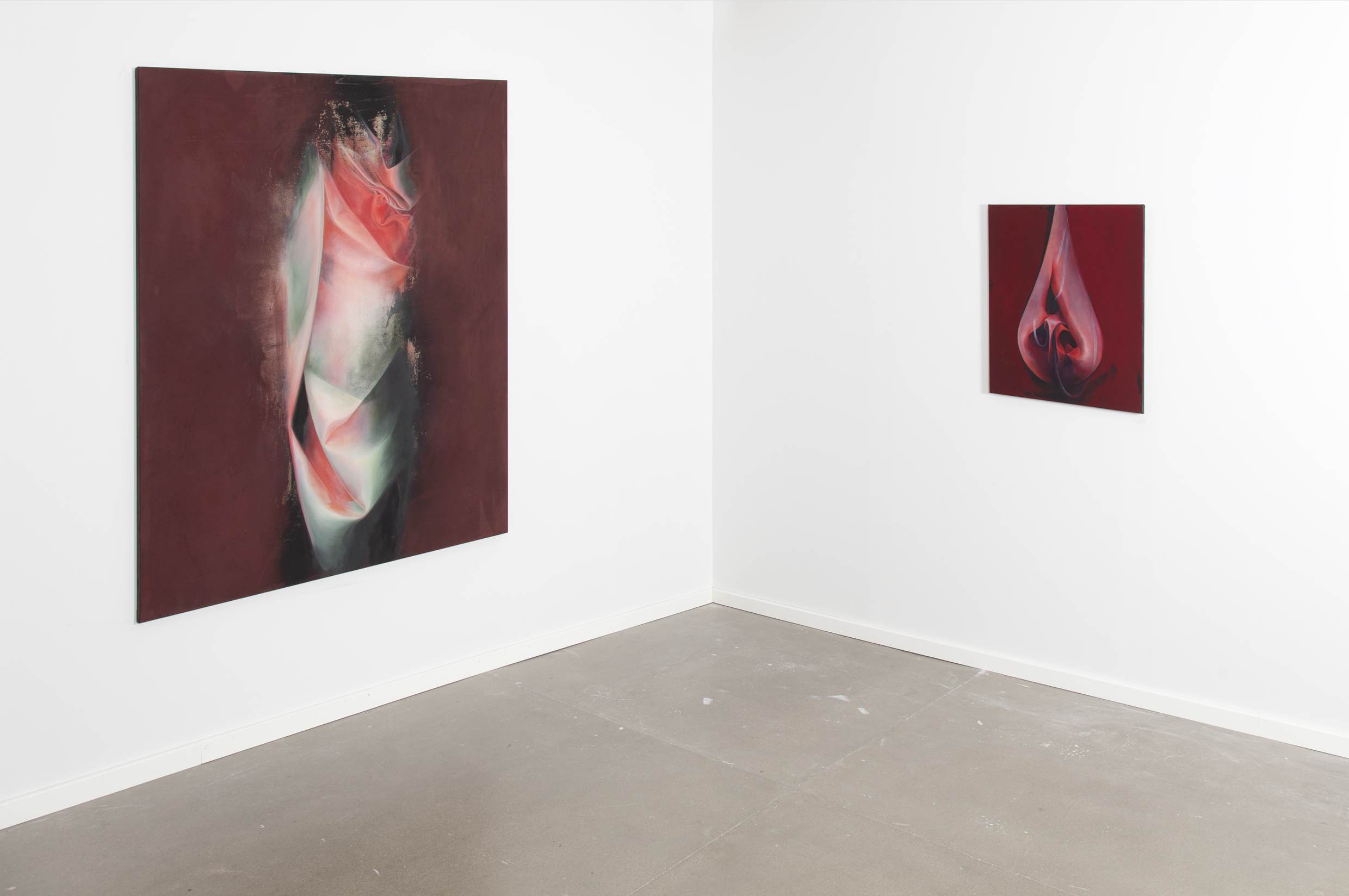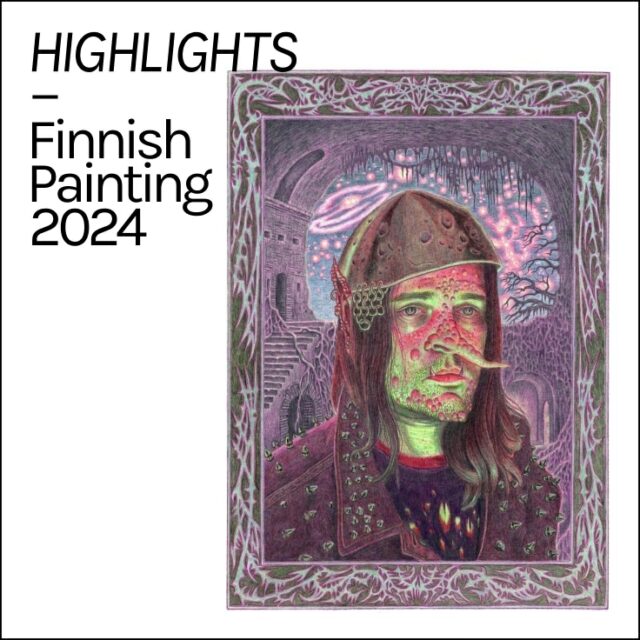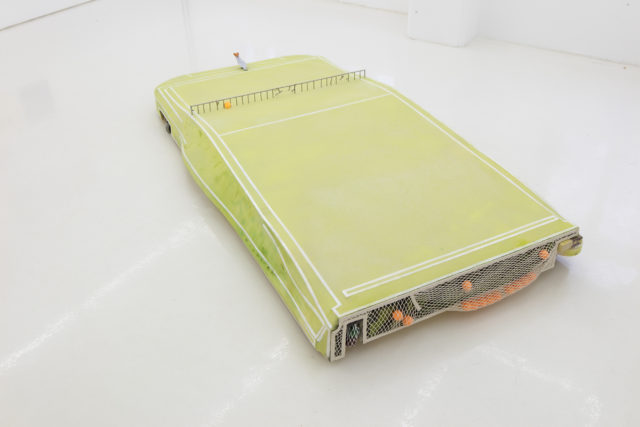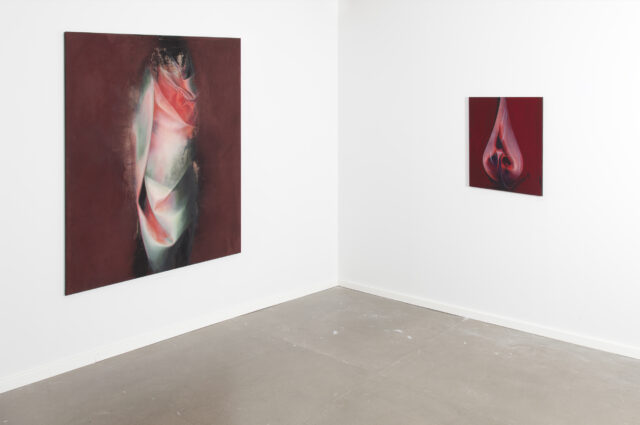Over the last five years or so I’ve had the great pleasure, via working with arts consultancy organisation the Finnish Art Agency, of visiting Finland several times. In the course of those visits, I’ve met with and spoken to numerous contemporary artists about their practice, and to gallery professionals, with particular attention to writing about contemporary art and exhibitions. My travels have taken me north to Seinäjoki, and to Kuopio in the northeast; unsurprisingly, however, much of my time and focus has been spent in and around capital city, Helsinki.
I’ve visited and returned often to, among other art spaces, the internationally renowned Kiasma, HAM (Helsinki Art Museum), and the Ateneum – self-declared ‘home of Finnish art’. The latter, currently closed for renovation, boasts the nation’s oldest and largest collection. Back in 2016, making great use of this treasure trove, the Ateneum’s curators convened an exhibition that has stayed with me. Called Stories of Finnish Art, it evocatively illustrates a creative narrative arc in Finland, beginning in the nineteenth century and continuing until roughly the 1950s. It expertly presents a startling and vivid history. From Akseli Gallen-Kallela’s national epic the Kalevala to pop, via luminaries including Hugo Simberg and Helena Sofia Schjerfbeck. Amid the homegrown talent is interspersed a host of international names, introducing new dialects and flourishes into local conversations, signalling the universal, global nature of visual art.
Especially in terms of the Finnish artists, though, the exhibition was revelatory. (Indeed, it triggered in me a love of Schjerfbeck, and her lifetime commitment to portraiture.) But if this fantastic story leads us up to the middle of the last century, what of the subsequent years, and today? For history – and by extension, its story – is always being written. And one aspect that has united each of my trips to the country has been the obvious depth and breadth – in terms of the quality and great range – of its contemporary arts landscape. The proliferation of independent and commercial spaces that jostle alongside those mammoth institutions mentioned above points to a healthy scene.
As such, new stories of Finnish Art are currently being composed even as I type, by new generations hopeful of adding their names to an already impressive list of notable protagonists. Standing on the shoulders of giants, while also keen to introduce new ways of seeing and thinking, to open new dialogues with which to engage with the world.
My most recent trip to Finland came in 2020, just prior to Covid–19 interfering so horribly and completely with our lives. Recently I’ve wondered about when and if I’ll be able to visit once again, to continue my ongoing correspondence with the art and artists there. Soon, I hope. In the meantime, however, there has been some consolation in the form of the arrival of Finnish Painters, pitched as a new ‘platform for visual arts professionals to get acquainted with Finnish painting’.
Classing myself as a very interested outsider – but, still, an outsider all the same – it was with great curiosity that I’ve read about and looked at the work of Finnish Painters’ initial cohort of fifty artists; many, in fact most of whom, I was unfamiliar with. Each is busy with dreaming up exciting new sentences, paragraphs – perhaps even whole chapters – that will form part of the continuing story of Finnish Art. Below, I’ve selected five such artists, ones that I think provide a clear sense of a rich and varied contemporary scene – in Helsinki and beyond.
Most recently to be found exhibiting in London, as part of group show Synthesis, curated by Delphian Gallery, Taru Happonen works across painting, sculpture and installation. Incorporating materials such as ocean waste, cable-ties, and plastic bags in her work, she addresses at close quarters the rarely happy collision of nature and manmade materials. In large-scale painting installation An invasive Species, for example, we see a slick of black flowing abundantly from the wall to gallery floor; its provocative title paired with its content leaving us in little doubt of the disastrous results of oil spillages at sea. Happonen’s urgently relevant oeuvre seems to scream ‘there is no planet B!’. She confronts us with the Anthropocene, our devastating impact on the Earth’s climate and ecosystems, reminding us of the importance of art in visualising and elucidating the world in which we live.
Also blurring the line between painting and sculpture, Jenni Yppärilä’s gaze is more local, yet no less serious for that. Utilising a three-dimensional painting technique, Yppärilä brings the viewer to street level, inviting the audience into the worlds of the people and communities that work, gather, and live there. Having seen her work first hand (in 2018/19 Kiasma exhibition There and Back Again), I can report that your first response is to marvel at its detail and intricacies: tags left on walls by graffiti artists, expertly rendered Coca Cola advertisements, and the reclaiming of some of the more unloved spaces by flora, unperturbed and striking back in its slow-moving battle with the alien, concrete jungle. Such quotidian elements hint at the artist’s sharp eye for social commentary, bringing into focus a variety of issues. Amid these portraits of society and its constituents, Yppärilä is hinting at the cracks appearing before our eyes – both literal and figurative; ones that require attention now lest they irreparably widen.
From social issues visible to the naked eye to something more enigmatic now, in the form of Stiina Saaristo’s frequently macabre practice. With it she addresses life’s traumas, rooted in and traced back to childhood experiences; fittingly many of the works present us with abject fairy-tale scenarios. Painstakingly rendered in pencil on paper, in Juhlat-Festen we find an adult woman dressed in child’s party attire, holding a sceptre and wearing a tiara; cluttered around her are festive accoutrements: balloons, cake, and drinks. Despite these signifiers, however, the scene is not one of celebration, but of deflation, while the birthday girl’s face wears a look of disappointed indignance rather than joy. Viewed from the right, Girl and a dog’s title seems to say all we need to know about it. From the other side, though, we are granted an insight into horrors going on just beneath the surface as, in cut-away, Saaristo reveals her subjects’ vulnerability, complete with sinew and bone, to signify that more is at play here than meets the eye.
The work of Sara Orava, although formally very different, is also rich with suggestion. Working in tempera, Orava’s canvases are sumptuous studies of clothing and drapery in which to lose yourself. They’re laden with art historical allusion as well as, perhaps, the knowledge that textiles throughout the ages have been employed as connotations of social standing as much as for their practical use value. The artist previously focused on human bodies, and while her biography suggests these have recently vanished from her output, the lavish biomorphic folds and creases that have replaced them are nothing if not alluringly corporeal in their appearance. Pale Heart and Dark Heart, for instance, fully deserve their pulsating titles. See Me I, meanwhile, is striking in its ambiguity. As she has said: ‘[Fabric] has dents, holes and surface, just like a human being. It shelters and it breathes…’ Imagining myself standing in front of her work, I can’t help but agree when she says: ‘I’m presenting an abstraction, at once an emotion and a physical experience.’
Last but very much not least, Stig Baumgartner is another artist who, however unlikely it may seem (given his deep engagement with abstraction), finds room for the human form. Alongside the strict, austere horizontal and vertical straight lines that populate his work, less predictably there can be found fuzzy edges, squiggles, and uneven blasts of colour. Suggesting fallibility, they’re inclusion – at odds with the accepted rigid and rational elements historically associated with abstraction – belies expectations to set Baumgartner’s vision of the much loved but duplicated art movement apart. As he says: ‘there is always something warped and imperfect about abstract art, revealing something salient about the human imperfection of what we call rational thought.’
As these artists indicate, the centuries old tradition of painting continues to find ways to engage with audiences and the world. Tackling the often surprising and knotty themes of lives and those who live them, great art addresses issues that affect us all in one way, shape or form. It holds up a mirror, reflecting what we are. Whether or not we like what we see, art opens the way for conversations, leaving us with new stories to tell.
Mike Pinnington is an editor and writer based in Liverpool (UK). He is the co-founding editor of arts criticism website, The Double Negative (est. 2011). He has been published internationally and previously worked as Content Editor for Tate.



